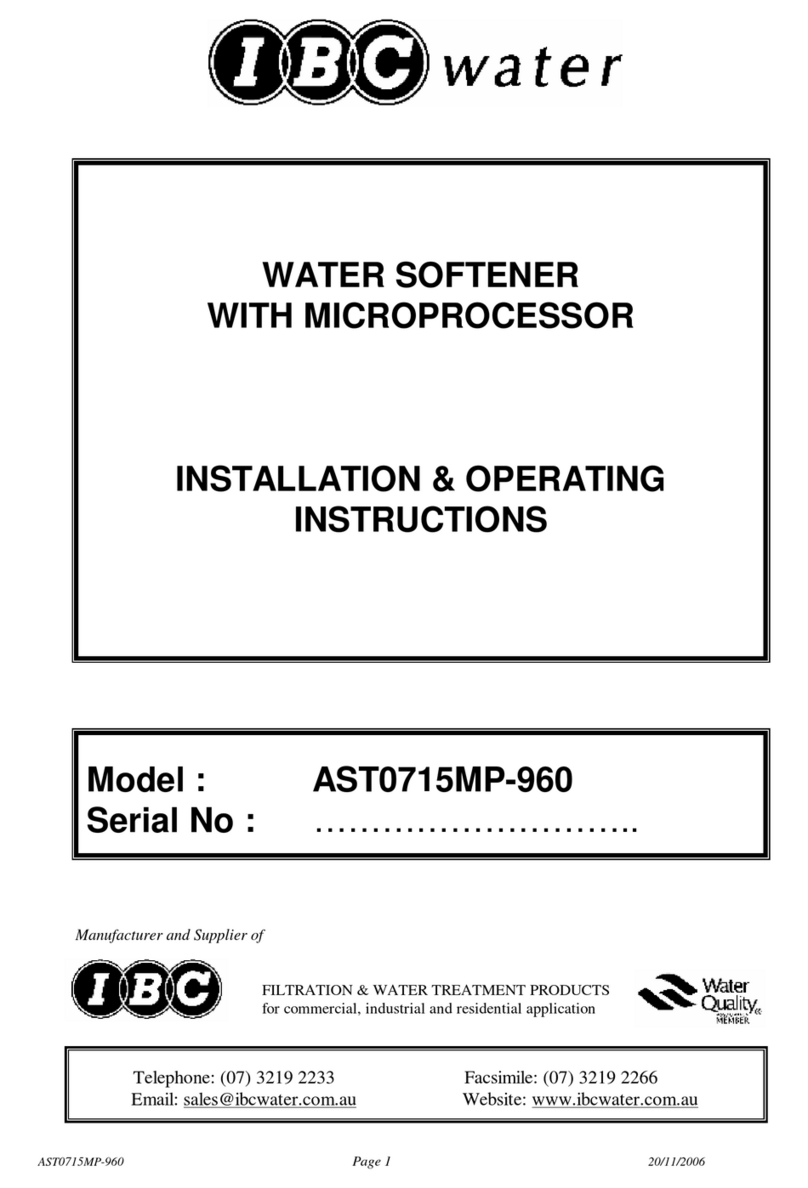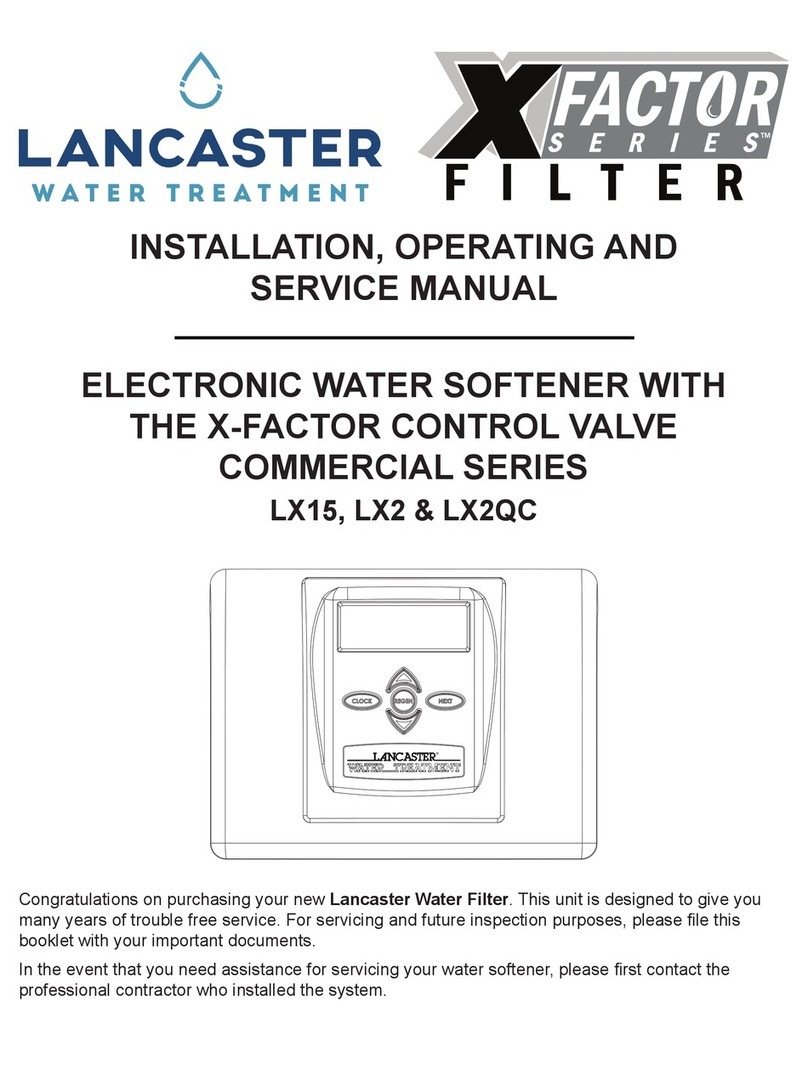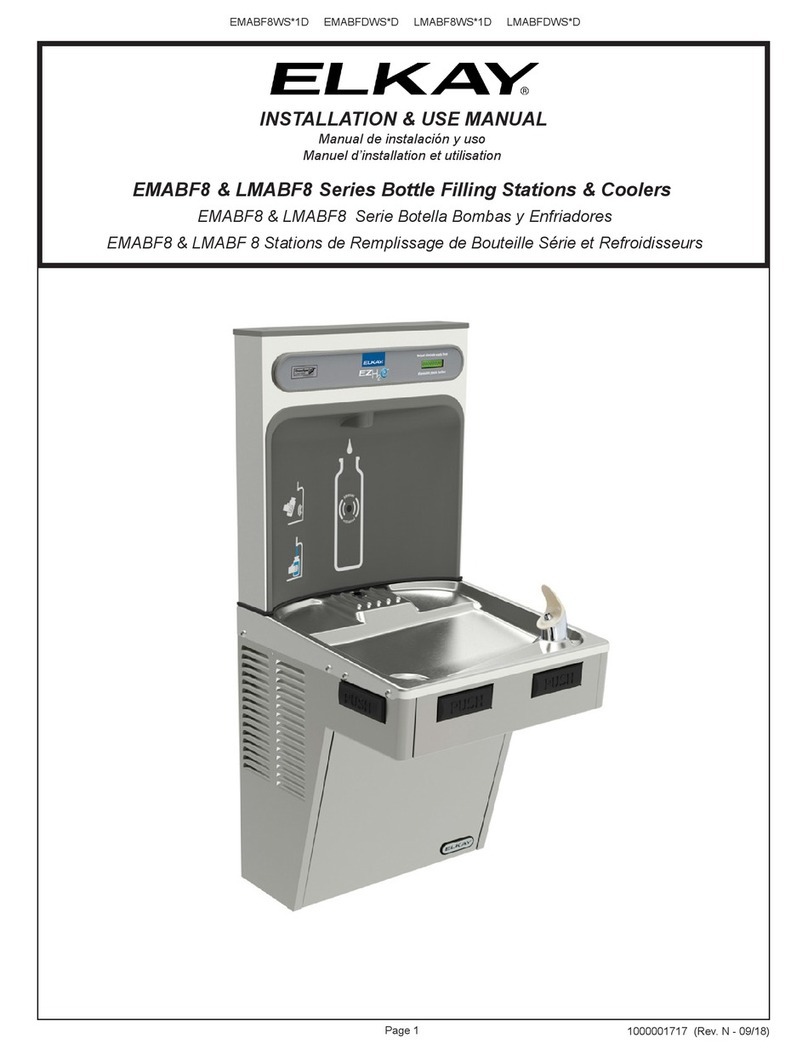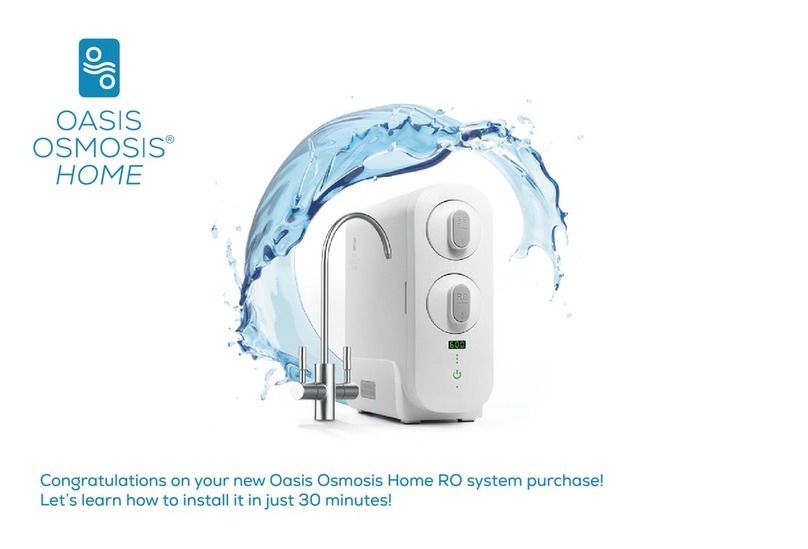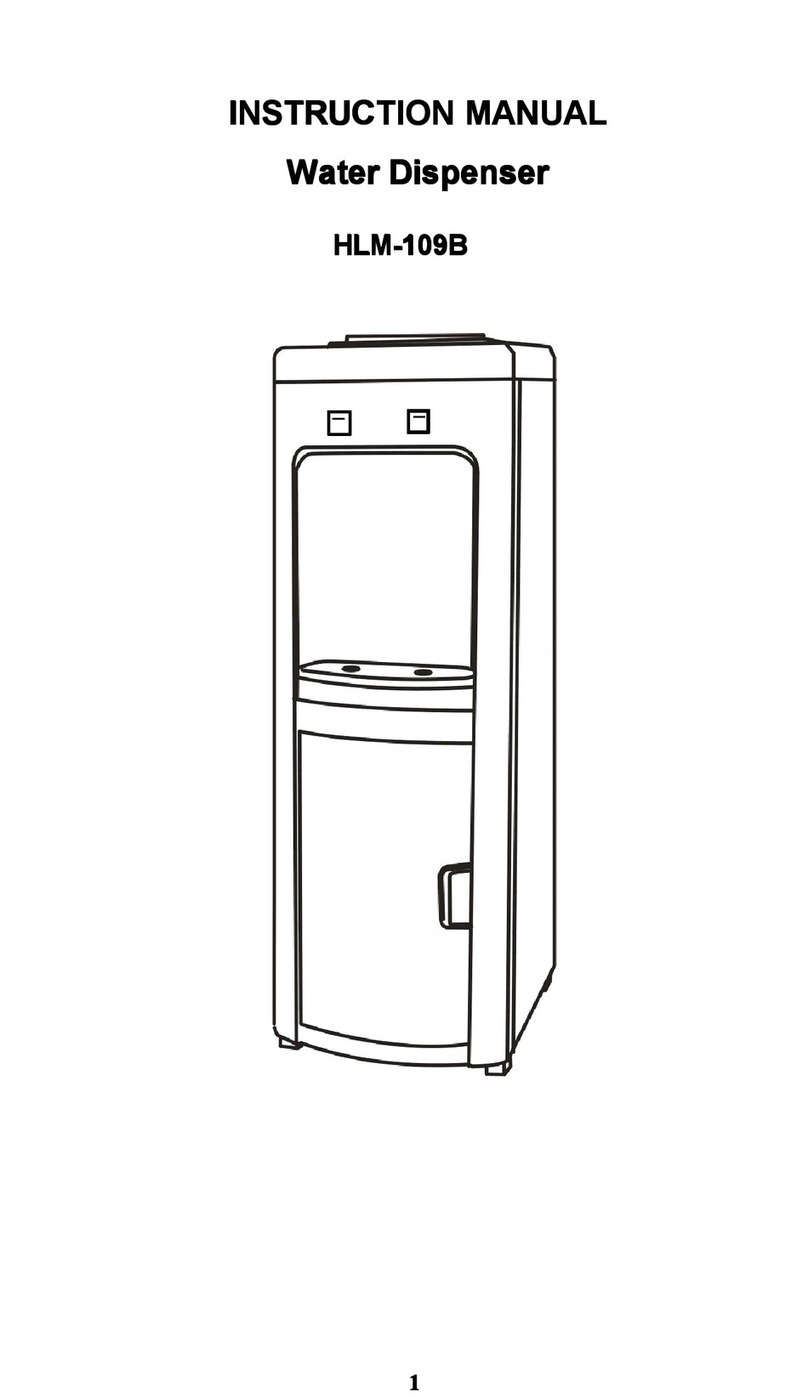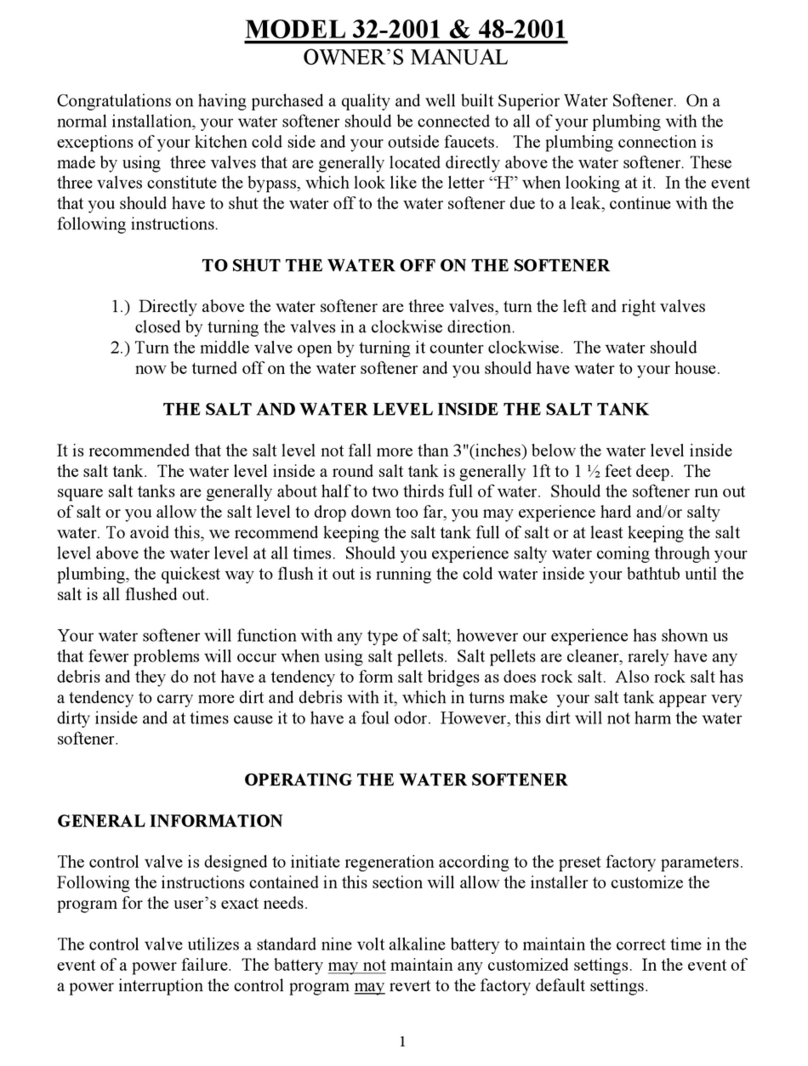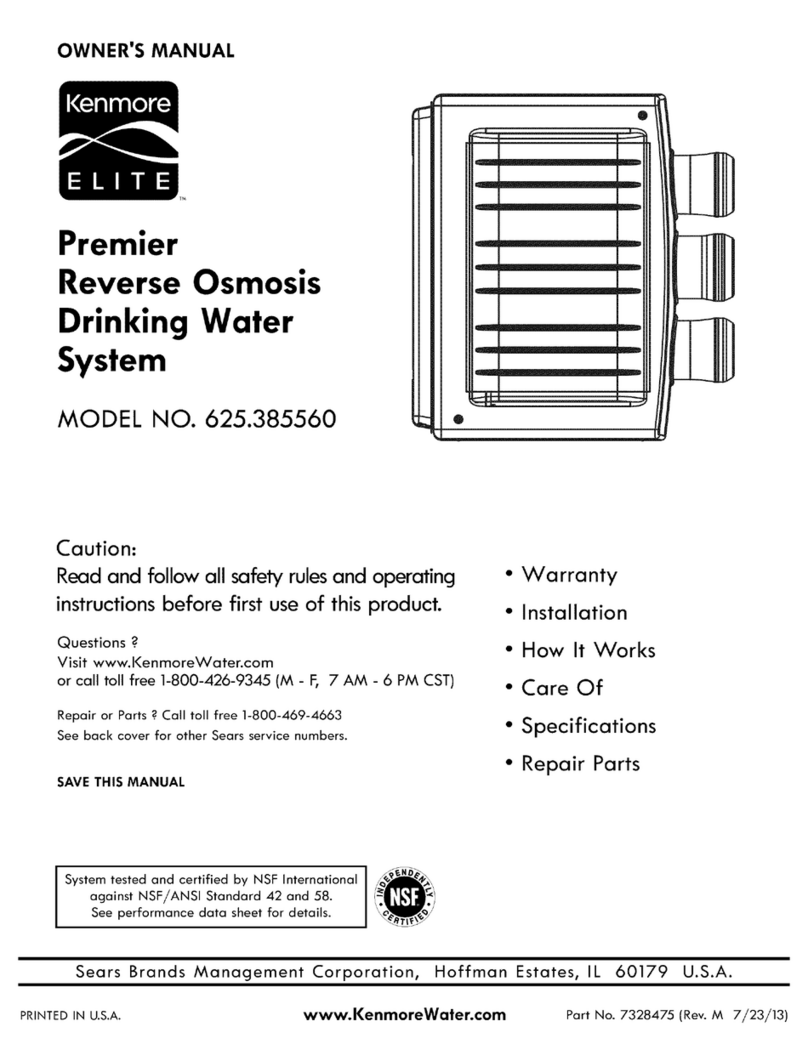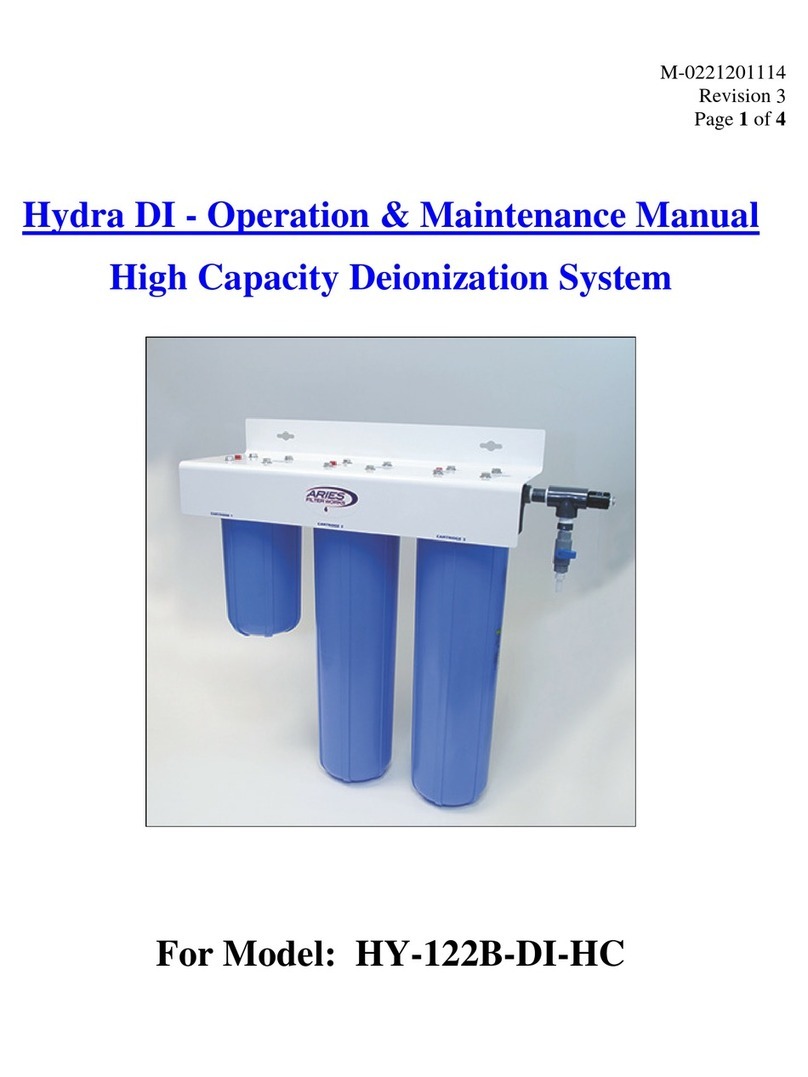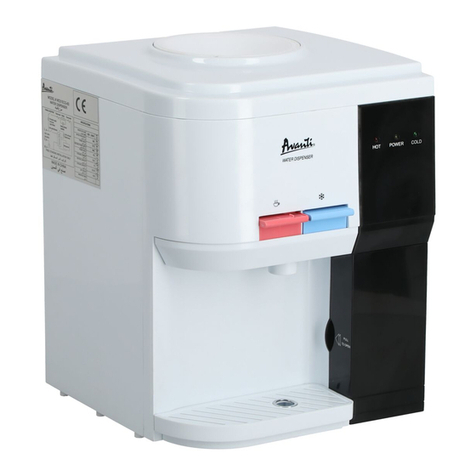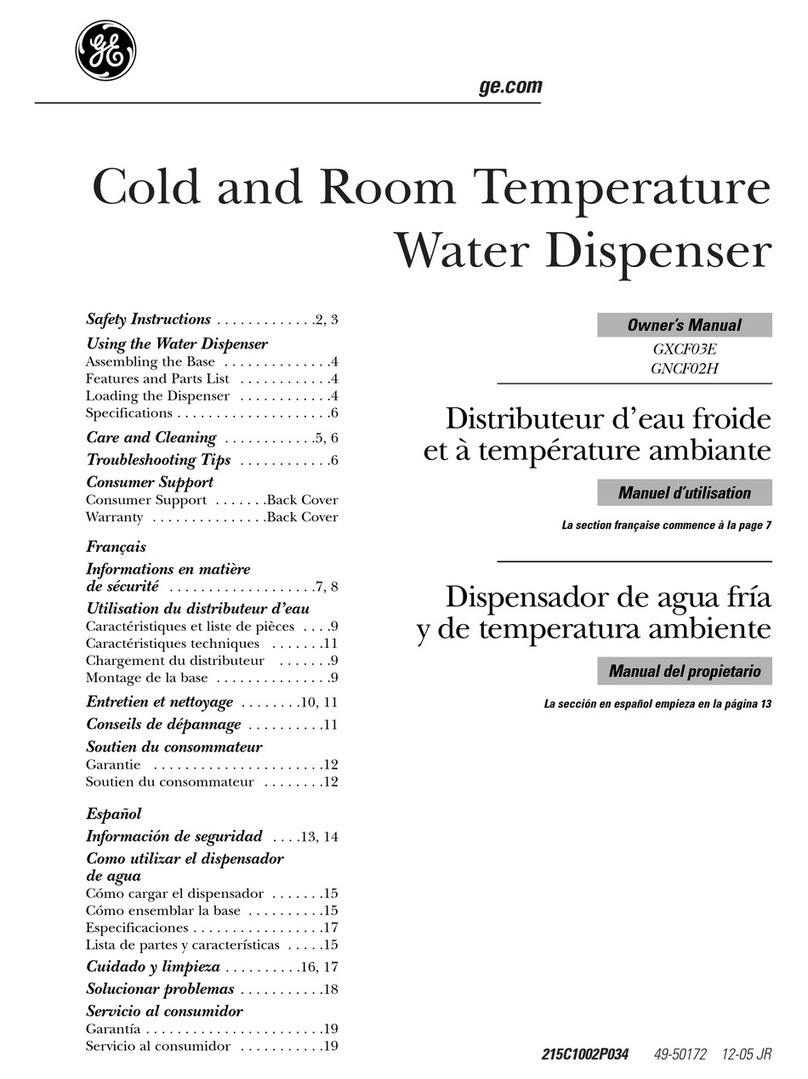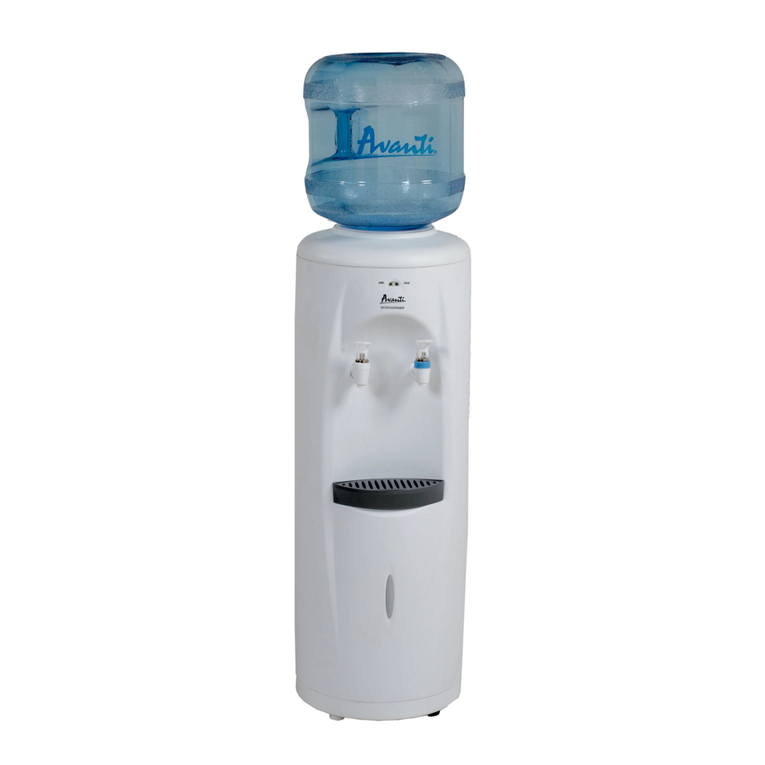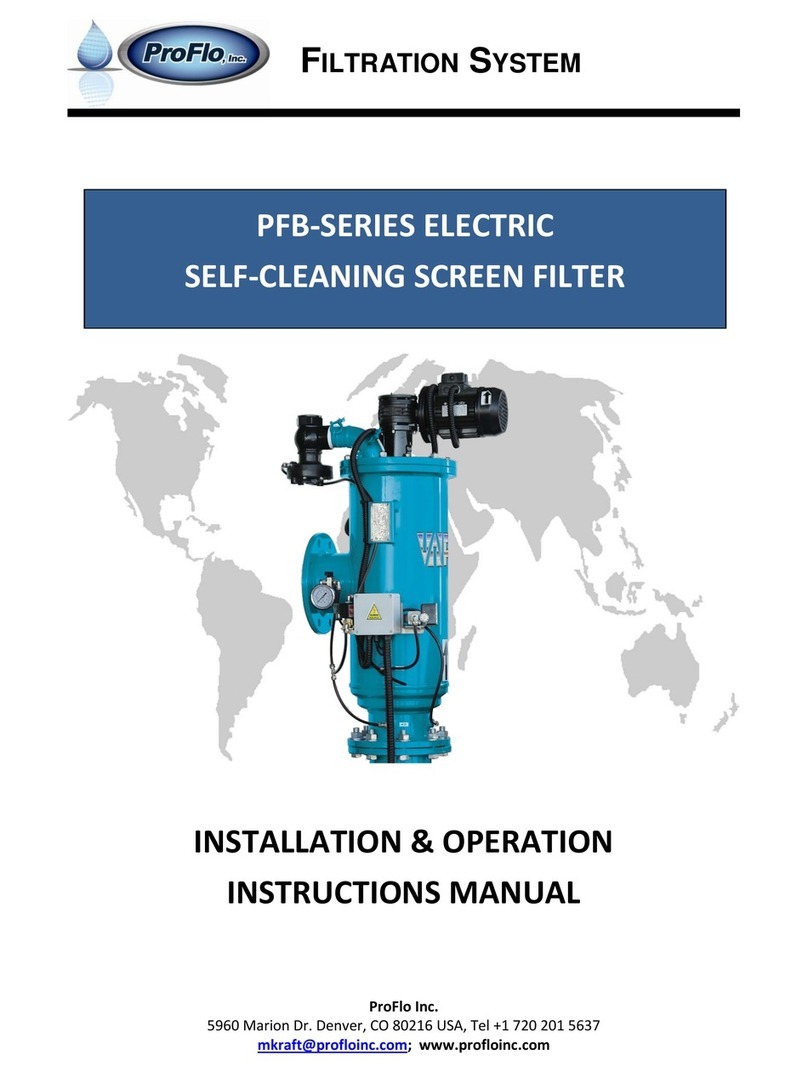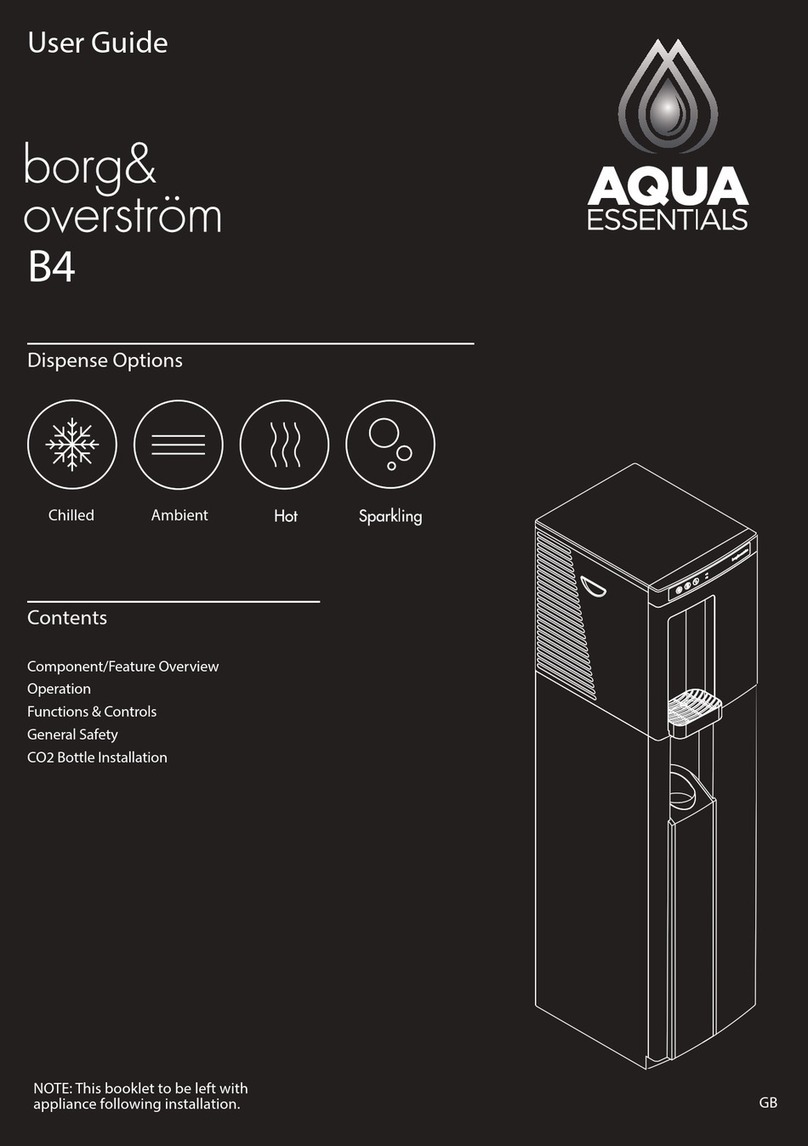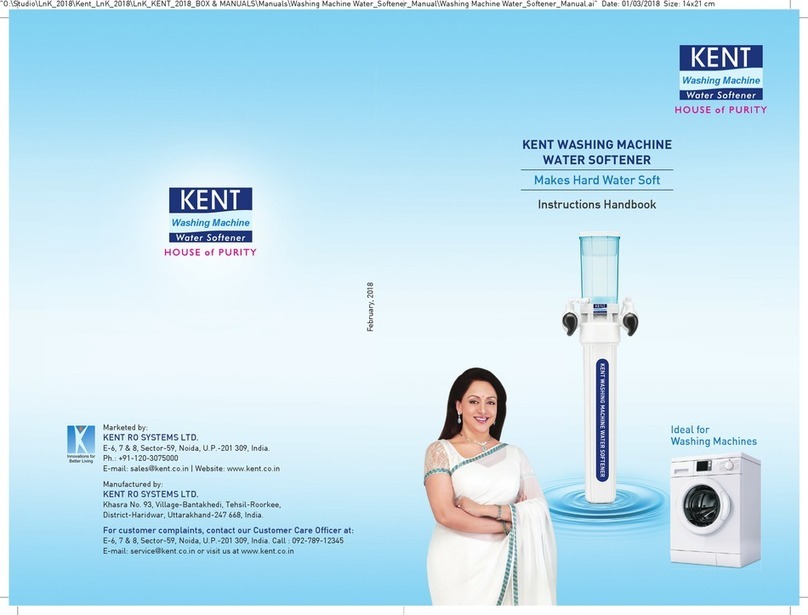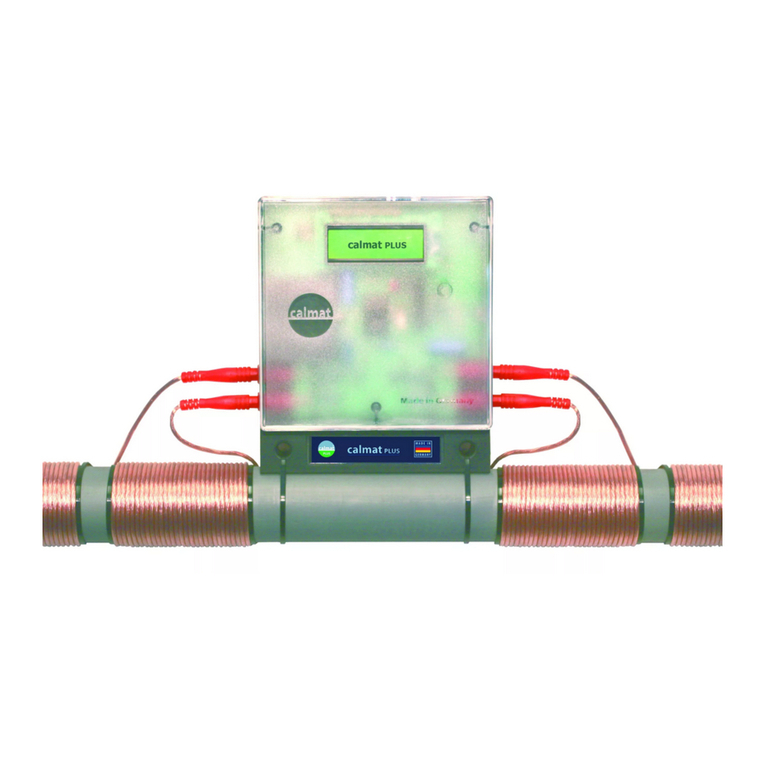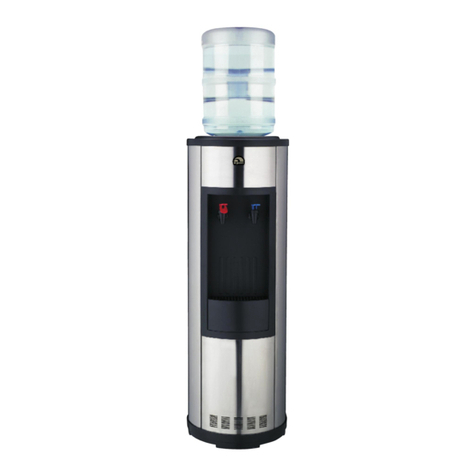
3
TROUBLE SHOOTING GUIDE
PROBLEM POSSIBLE CAUSE CORRECTION
Softener will not
regenerate.
A. Bad electrical connection.
B. Broken motor
C. Broken or stripped gears.
A. Check electrical connection.
B. Replace motor.
C. Replace gears.
Drain opens but water
does not leave salt tank.
A. Low inlet water pressure.
B. Broken or torn diaphragm.
C. Retaining ring missing.
D. Foreign material on stem or
internal seats.
E. Drain line kinked or restricted.
A. Increase inlet water pressure.
B. Replace diaphragm.
C. Add retain ring.
D. Clean stem and seat on main
body.
E. Straighten or unrestrict drain line.
Softener does not draw
brine.
A. Plugged injector screen.
B. Plugged or worn injector.
C. Inadequate backwash.
D. Low inlet water pressure.
E. Broken or plugged brine float
F. Kinked or restricted drain line.
A. Clean or replace.
B. Clean or replace.
C. Adjust backwash flow rate with
backwash adjuster.
D. Increase water pressure.
E. Clean or replace.
F. Straighten or unrestrict drain line.
Low or inadequate
capacity after
regeneration.
A. Plugged injector.
B. Plugged injector screen.
C. Increase in water consumption.
D. Insufficient quantity of brine.
E. Ran out of salt at one time.
A. Clean or replace.
B. Clean or replace.
C. Increase frequency of regeneration.
D. Raise float level on brine valve.
E. Regenerate softener 3 nights in-a-row.
Water chatter at unit
during regeneration
A. High backwash rate.
B. Low water pressure.
C. Diaphragm spring not properly
located on stem.
D. Restricted drain line.
A. Adjust backwash flow adjuster
B. Increase water pressure.
C. Locate spring on tip of stem assembly.
D. Straighten or unrestrict drain line.
Water flows to drain
when not regenerating.
A. Foreign matter trapped in drain
valve.
B. Drain seat out of adjustment.
A. Attempt to flush out by putting unit into
regeneration or with thumb push down
on drain valve and release.
B. Replace drain assembly.
Salt in lines after
regeneration.
A. Rinse rate to low.
B. Excessive brine in salt tank.
C. Insufficient rinse time.
A. Change to larger injector disk.
B. Lower float setting or check for leak on
float.
C. Increase length of regeneration cycle.
Valve leaking between
body and head
assembly or backcap.
A. Torn diaphragm or pinched
outlet gasket.
A. Replace items.
To much water in brine
tank.
A. Foreign matter in brine float.
B. Loose brine float fittings.
A. Clean or replace brine float.
B. Tighten or replace brine float fittings.
No water in brine tank. A. Brine float set to low.
A. On Round and 15x15 Square salt tanks
adjust brine float to allow 1 to 1½ ft. of
water. On 11x11 Square salt tanks, set float
to approximately fill tank half full.
